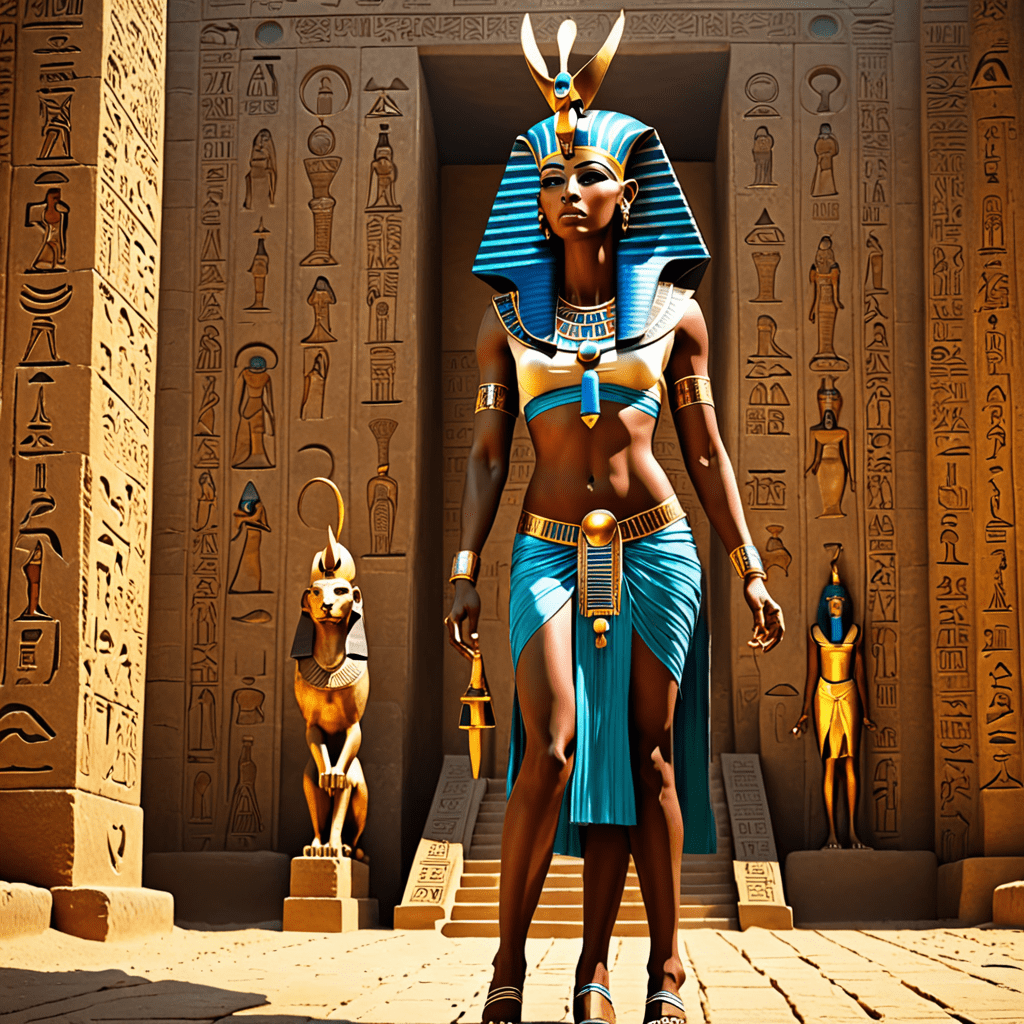The Myth of the Goddess Tefnut in Ancient Egypt
Who Is Goddess Tefnut in Ancient Egyptian Mythology?
In ancient Egyptian mythology, Goddess Tefnut was known as a deity of moisture, rain, dew, and clouds. She was considered one of the primordial gods born from the breath of Atum-Ra, the creator god. Tefnut was typically depicted as a lioness or a woman with the head of a lioness, symbolizing power, fierceness, and protection.
Attributes and Importance of Goddess Tefnut
Tefnut was an essential goddess in Egyptian mythology as she represented the vital aspects of moisture and fertility in the arid Egyptian environment. She was closely associated with the waters of creation and the primeval oceans from which all life was believed to have emerged. Tefnut’s presence was instrumental in maintaining cosmic balance and harmony.
Mythical Stories and Symbols of Goddess Tefnut
One prominent myth tells the story of how Tefnut, along with her brother Shu, the god of air, were sent by Atum-Ra to bring back order when chaos threatened the world. Tefnut’s role was to purify and provide the life-giving waters necessary for rejuvenation and growth. She was often depicted holding a scepter, representing her authority over the waters and fertility.
Legacy and Continued Reverence for Tefnut
Despite the shifting dynasties and cultural changes in ancient Egypt, the legacy of Goddess Tefnut endured. Her symbolic presence in art, hieroglyphs, and religious rituals highlighted the importance of fertility, abundance, and protection. Even today, Tefnut’s significance in ancient Egyptian mythology continues to intrigue scholars and enthusiasts alike, shedding light on the intricate belief systems of this ancient civilization.
FAQs about the Myth of the Goddess Tefnut in Ancient Egypt
Who was Tefnut in Ancient Egyptian mythology?
Tefnut was a significant goddess in Ancient Egyptian mythology, often depicted as a lioness or as a woman with the head of a lioness. She represented moisture, rain, and humidity.
What was Tefnut’s role in Egyptian mythology?
Tefnut was considered one of the primordial deities and was believed to be the daughter of the sun god Ra. She played a vital role in the creation myth, where she and her brother Shu were tasked with separating the earth (Geb) from the sky (Nut).
Why was Tefnut important to the Ancient Egyptians?
Tefnut’s association with moisture and rain was crucial for agriculture in ancient Egypt. The annual flooding of the Nile River was believed to be linked to her benevolence, ensuring fertile lands for cultivation.
Did Tefnut have any symbolic representations?
Tefnut was often symbolized by the lioness, which represented power, protection, and ferocity. She was also associated with the uraeus, a symbol of divine authority and protection in Egyptian mythology.
Was Tefnut worshipped in Ancient Egypt?
Yes, Tefnut was worshipped in various Egyptian temples, especially in the city




